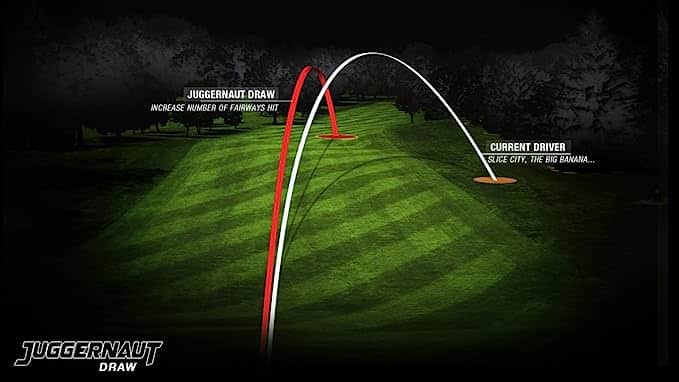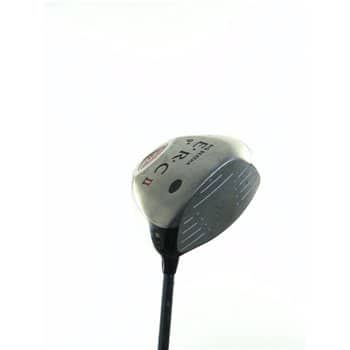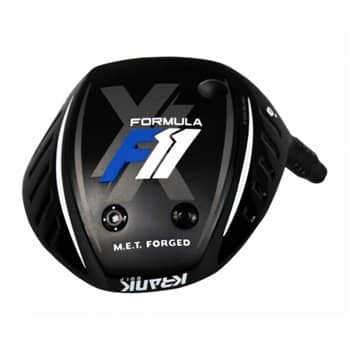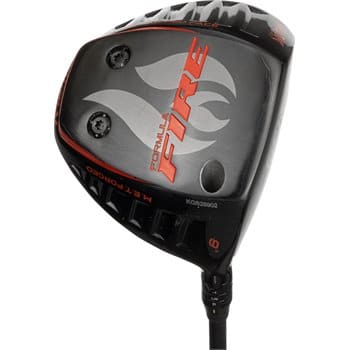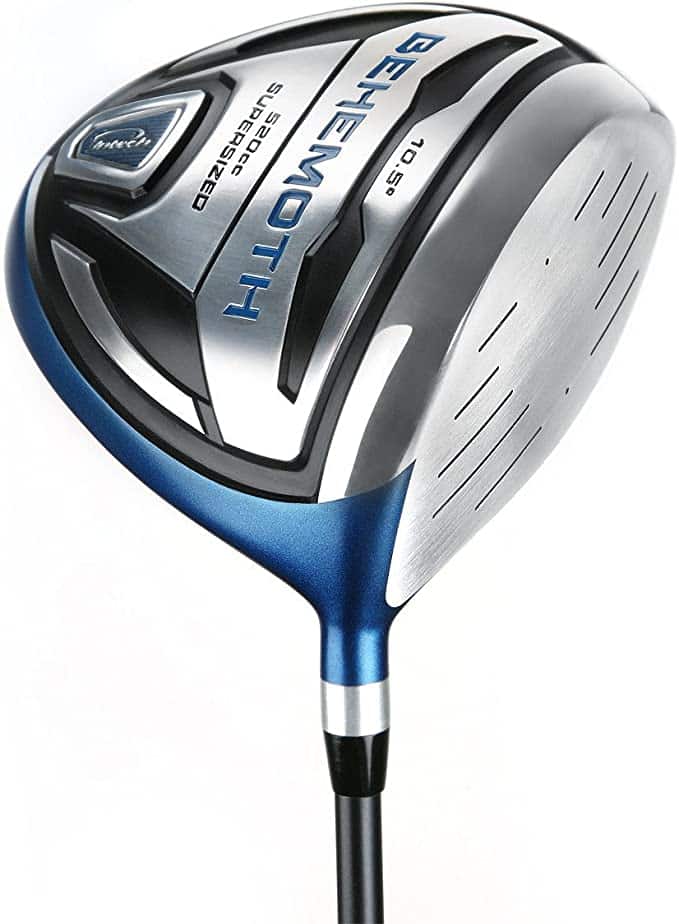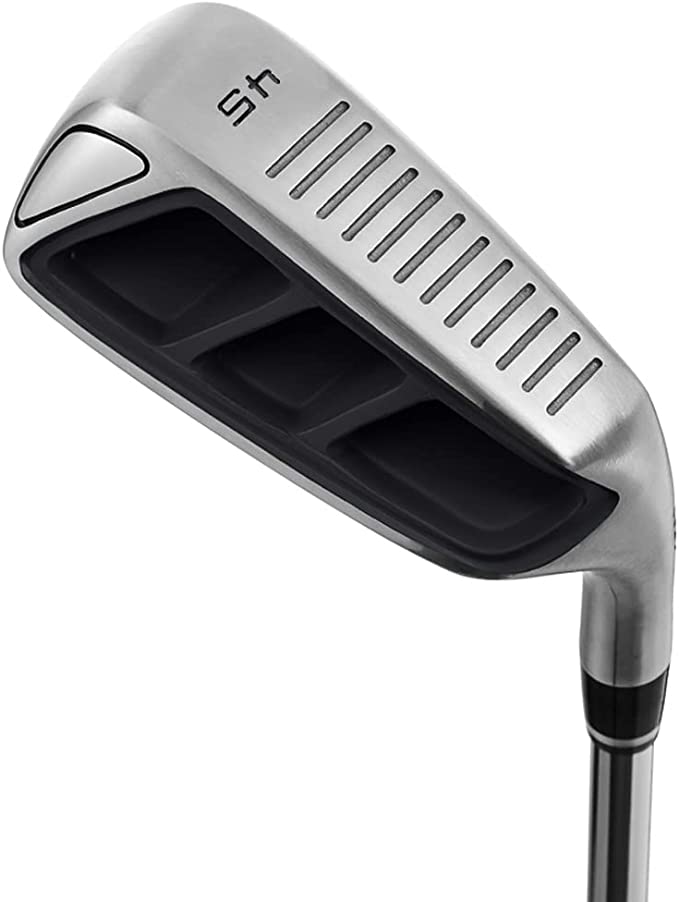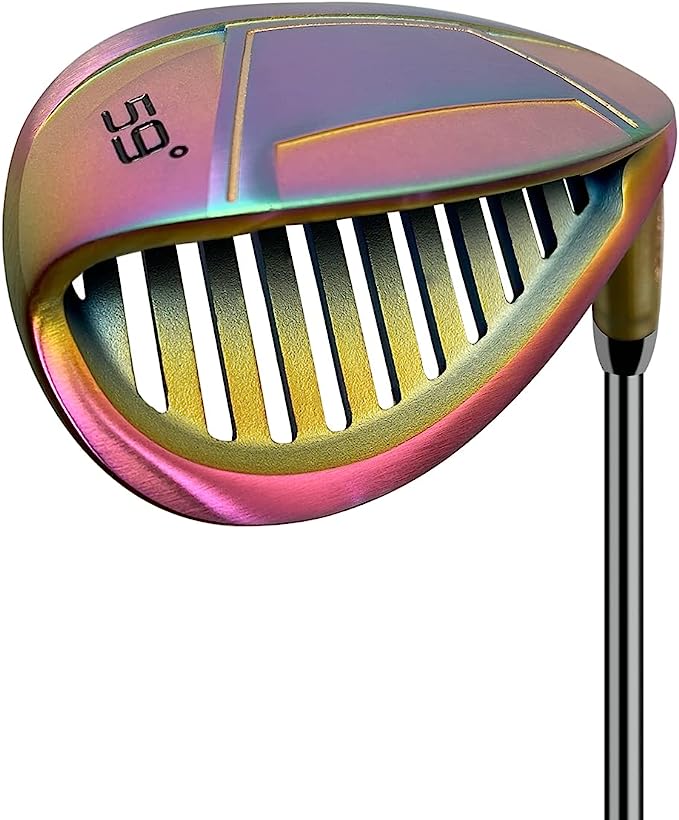The world of golf is full of surprises, and if you’re here, chances are you’ve stumbled upon one of those surprises: illegal golf clubs.
Now, before you get too alarmed, let me tell you, these ‘illegal’ clubs aren’t going to land you in jail, but they might just make your friends green with envy at your newfound driving range.
Stick around as I delve into the intriguing world of these unique pieces of equipment and highlight their key features and manufacturers. And who knows, you might just find one that piques your interest.
In short, the 8 best-known illegal golf clubs are:
- MAZEL Sand Wedge
- Juggernaut XXL 515cc Driver
- Q Adjustable Loft Golf Club
- Money Club High Launch 520cc 10.5° Driver
- Callaway E.R.C. II
- Intech Golf Oversized Behemoth 520cc Driver
- Krank Golf Formula XX Driver
- Dead Aim 3-DB Belly Mallet Putter
- GEEK GOLF DOT COM #1 Japan This 551 Hot Version
- Orlimar Big Buddha 520cc Jumbo Driver
Golf clubs are deemed illegal when they fail to meet the rules and regulations set by governing bodies like the USGA and R&A. Factors such as exceeding maximum clubhead size, having excessive spring effect, or surpassing length limitations make these non-conforming golf irons, restricting their use in official tournaments and handicapping calculations.
Read on to learn:
- What are illegal golf clubs?
- When can’t you use illegal golf clubs?
- The best illegal golf clubs
- The best illegal golf club brands
- Pros and cons of using illegal golf clubs
What Makes A Golf Club Illegal?
Know the basics so you don’t get dinged in any upcoming tournaments.
The Concept of an ‘Illegal’ Golf Club
Alright, let’s take it from the top. I know ‘illegal’ sounds rather dramatic to associate with golf clubs, but it’s not as sinister as it sounds. When discussing an ‘illegal’ or ‘non-conforming’ golf club, we’re discussing a club that doesn’t fit the rules and regulations set by the good folks who govern the sport.
It’s not like you’ll be in handcuffs for using one – but it does mean you can’t strut out onto the course and use it in any official games or when calculating your handicap.
The Devil’s in the Details: Technical Aspects That Make a Club Illegal
Now, when it comes to what exactly makes a golf club illegal, it’s all in the specifics. There are three main culprits – the clubhead size, the clubface’s ‘spring’ effect (also known as the Coefficient of Restitution or COR), and the shaft length.
- First up, the size of the club head. For example, for drivers, the maximum clubhead size allowed is 460 cubic centimeters. So, if you’ve got a driver with a clubhead larger than that, it’s officially non-conforming.
- Next, we have the clubface. It’s all about how much the clubface ‘springs’ or rebounds when it smacks the ball. If the COR is over 0.830, that’s too much spring, and that club is a no-go according to the rules.
- Lastly, there’s the length of the shaft. A longer shaft might help you get more distance on your drive, but it can also be harder to handle. The powers that be have decided that the shaft length shouldn’t exceed 48 inches. Anything more than that, and you’re straying into illegal territory.
The Judges: Who Decides What Makes a Golf Club Illegal?
So, who are the judges in this scenario? It’s the United States Golf Association (USGA) and the Royal and Ancient Golf Club of St. Andrews (R&A). These guys set the standards for golf club design, size, and performance.
Remember, these standards aren’t just for kicks—they’re there to ensure everyone’s on an even playing field and to keep the sport’s integrity intact. Sure, an illegal club might give you a slight advantage in a casual game or when you’re practicing, but when it comes to official play, it’s all about your skill, strategy, and fair play.
Read more: The Best Illegal Golf Balls
When Can’t Players Use Illegal Golf Clubs?
After all, aren’t sports supposed to be fun? Some people take it more seriously than others.
Participating in Official Tournaments
First, any official tournament is illegal clubs’ most stringent no-go zone. Whether you’re hitting the greens at the local level or dreaming of standing next to the pros, the game’s rules are unwavering.
The USGA and R&A strictly prohibit illegal clubs; any deviation is met with swift penalties. Trying to gain an edge with a non-conforming club could disqualify you, a fate any passionate golfer would prefer to avoid.
Calculating Your Handicap
When it’s time to calculate your handicap, that’s another situation where illegal clubs are a definite no-no. Your handicap is a measure of your golfing ability and is crucial for fair competition.
Using a non-conforming club would skew this measure, rendering it inaccurate and misleading. It’s important to remember that the handicap system is designed to level the playing field, and using an illegal club goes against this spirit.
In Training and Practice Sessions
You might think, “Well, I can use it in my practice sessions, right?” Not exactly. If you’re training for a tournament or working on improving your game, using an illegal club isn’t the best idea.
Practicing with a club, you can’t use in real competition can lead to forming habits and swings that don’t translate well to conforming clubs. In the long run, this can affect your overall performance and improvement.
Consequences of Using Illegal Clubs
If you choose to use illegal clubs in these situations, the consequences are hefty. In official tournaments, the penalties can range from disqualification to losing hole victories in match play or extra strokes in stroke play.
If you’re calculating your handicap, you might end up with an unfair representation of your ability, which could potentially lead to your handicap being adjusted or even being disqualified.
The bottom line is this: the course is a place for sportsmanship and fair play. And while there’s a time and a place for non-conforming clubs, it’s crucial to understand when and where they simply aren’t allowed.
As a side note, if you’re interested in illegal golf clubs, you may also like the sound of clone golf clubs.
A Closer Look at Popular Illegal Golf Clubs—Non-Conforming Golf Clubs List
Exploring the realm of non-conforming or “illegal” golf clubs can be both enlightening and intriguing. Let’s delve a little deeper into these unconventional marvels of golf design.
1. MAZEL Sand Wedge
The design of the MAZEL Sand Wedge stood out to me immediately. It features a unique, perforated clubhead which, although it breaks USGA guidelines, serves a useful purpose. When I took it to the course, I found that these perforations were great for shedding debris.
My contact with the ball improved, and I felt more in control of my swing. Compared to the Cleveland RTX-4 Wedge, which sticks to conventional design rules, the MAZEL offers something truly different. The ability to sharpen the groove edges independently also adds to its uniqueness, and I found it kept the club in prime condition for longer.
2. Juggernaut XXL 515cc Driver
Swinging the Juggernaut XXL 515cc Driver for the first time, I was immediately aware of its large size. The clubhead is so large it exceeds the maximum displacement limit set by the USGA. In practice, this translates to a larger sweet spot and more forgiveness for off-center hits.
When I switched back to my Callaway Epic Speed Driver, which conforms strictly to USGA limits, I found it offered a more predictable performance and a better build quality. Still, the Juggernaut offers a unique and fun experience for casual games and non-competitive rounds.
3. Q Adjustable Loft Golf Club
A true Swiss army knife of golf clubs, the Q Adjustable Loft Golf Club can mimic any club in your bag with its adjustable loft feature. With an adjustable loft, it can mimic any club in your bag. It’s non-conforming for changing during a round, but its convenience, especially for traveling golfers, is undeniable.
I found the ability to change lofts so easily very handy. However, using my Mizuno MP-20 Iron Set again, I felt a more intimate connection with each club and its specific performance traits. While the Q club offers space-saving convenience, it doesn’t replace the feeling of mastering individual clubs.
4. Money Club High Launch 520cc 10.5° Driver
The Money Club High Launch 520cc 10.5° Driver is a non-conforming club that I found pushed my sensory limits. Its unique design and construction generate an unusual sound upon impact, which was quite unexpected.
It’s hard to argue with the consistently high drives and distance. When I used the Titleist TSi2 Driver, I felt a sense of familiarity and predictability. Yet, the Money Club provides an alternative experience for those looking to challenge their senses and push their driving distances.
5. Callaway E.R.C. II
Using the Callaway E.R.C. II, I could push the boundaries of my game. The enhanced COR, a greater energy transfer from clubface to ball, often resulted in longer drives.
When I switched back to my TaylorMade SIM2 Max Driver, I noticed that the distance might have been lesser, but the performance was more controlled. I’d say that The E.R.C. II is easily an excellent choice for those looking to test the limits of their drives.
6. Intech Golf Oversized Behemoth 520cc Driver
As I grasped the Intech Golf Oversized Behemoth 520cc Driver, I immediately noticed its daring disposition. The oversized 520cc clubhead, surpassing the USGA limit, promised a more forgiving drive.
During my playtest, I was amazed at how this club lent itself to my off-center hits, turning them into something more usable than my conventional drivers. Swapping it with the conforming Mizuno ST-Z Driver, I noticed the latter’s performance was reliably balanced – a steadfast friend in a competitive play scenario.
However, the Intech Behemoth stole the show with its audacious size and non-conforming spirit. For anyone willing to experiment, it offers an exhilarating blend of bold power and adventurous play, despite its ineligibility in tournament play.
7. Krank Formula 11 XX Driver
As I swung the Krank Formula 11 XX Driver, I could sense an air of defiance. This club laughs in the face of USGA regulations with its exceeded Coefficient of Restitution (COR) limit. As a result, the energy transfer from clubface to ball was palpably enhanced, sending my drives soaring farther than I had expected.
Shifting to the conforming Wilson Staff D9 for a comparative run, I observed its more regulated energy transfer and predictable performance. While this makes the Wilson a steady companion in tournaments, the Krank presents a thrilling challenge.
The enhanced distance and speed offered by the Krank Formula 11 XX create an irresistible temptation, a forbidden thrill for those willing to step beyond the conventional boundaries.
8. Dead Aim 3-DB Belly Mallet Putter
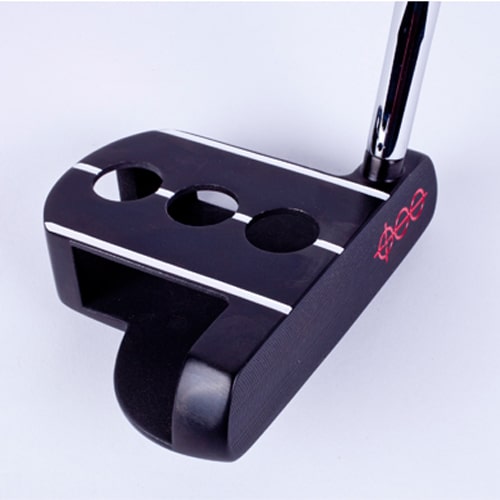
When I first picked up the Dead Aim 3-DB Belly Mallet Putter, it was like nothing I’d used before. The built-in laser guide was exciting and designed to help perfect your alignment. After using it, I realized this was more than a flashy gimmick. I saw improvements in my aim and consistency.
The Odyssey Stroke Lab Black Ten Putter, another putter I’ve used, relies on traditional alignment methods and doesn’t offer the same guidance. Despite its cool features, the Dead Aim is “illegal” for tournament play. Still, this putter is an excellent tool for casual games and practice.
No products found.
The Geek Golf DCT (Dot Com This) Driver is a controversial addition to this list. Although the head measures 460cc which would make it legal under normal circumstances, the USGA has declared it as non-conforming due to a minor error that occurred at the foundry. This error is found on all lofts in the 551 range except for the 12-degree loft. However, the whole range is declared as non-conforming.
The hosel angle at the axis measured from the middle of the shaft when inserted into the heel portion is .625 with a slight manufacturing tolerance. This pushes the shaft slightly more towards the middle of the clubhead making it illegal according to the USGA.
The same ruled affected putters previously but has since been adjusted to make it acceptable for middle shafted putters.
However, the Geek 551 DCT has proven itself and has won 17 titles at long-distance events sanctioned by the USGA. It holds the record for the longest drive ever when Mike Dobbyn drove it, yes you guessed it, 551 yards.
The Orlimar Black Big Buddha 520cc Jumbo driver is designed with a 520cc clubhead exceeding the maximum size by 60cc. The design can reduce energy loss during your swing, thus increasing clubhead speed and reducing spin for maximum distance.
It is designed to simulate a Callaway Big Bertha. Furthermore, the design promotes a higher ball flight.
The large clubhead offers a large sweet spot to generate distance on off-center hits.
A thin crown enables the manufacturers to move the weight lower into the sole area for an enhanced moment of inertia (MOI).
The crown is black with a white alignment aid, while the sole is red and silver with generous branding. It is also available in a white crown and black alignment aid with a black and silver sole.
Graphite shafts include flex regular, stiff, or senior flex. It is only available in a 10.5-degree loft and right-hand configuration.
Read more: The Best Illegal Golf Drivers
Who Makes Illegal Golf Irons?
Non-conforming golf clubs are made by a variety of manufacturers, both well-known and niche. Some design these clubs specifically for the non-conforming market, while others create them as part of a broader product range.
Krank Golf
Krank Golf specializes in creating clubs for long-drive championships, which often fall outside the rules of conventional golf. Their drivers, such as the Formula 11 XX, offer enhanced ball speed and distance. Despite their non-conforming status, their clubs are recognized for superior build quality and high performance.
Intech
Intech is known for creating affordable and versatile golf clubs that often defy conventional rules. Their Behemoth line, for example, includes drivers that exceed the maximum allowable size. These clubs are ideal for golfers looking for an edge in their casual play or practice rounds.
MAZEL
MAZEL is another manufacturer that creates non-conforming clubs. They design unique golf clubs, like the MAZEL Sand Wedge, with grooves that completely perforate the clubhead, providing superior control and debris shedding.
Pros and Cons of Using Illegal Golf Clubs
This section will delve deeper into the potential benefits and drawbacks of using illegal golf clubs.
Pros of Using Illegal Golf Clubs
- Improved Performance—Non-conforming clubs often promise enhanced performance, like greater distance, improved accuracy, or better control. This can make golf more enjoyable for some players, especially beginners or high handicappers.
- More Forgiving—With larger clubheads or expanded sweet spots, illegal clubs can be more forgiving on off-center hits. This can be beneficial for novice golfers still honing their swing mechanics.
- Novelty Factor—Nonconforming clubs’ unique designs and features can add a fun, novelty element to your golf game. They can provide a fresh perspective and a new challenge.
Cons of Using Illegal Golf Clubs
- Not Suitable for Official Play—The most significant drawback of illegal clubs is that they can’t be used in official tournaments. They may limit your opportunities to compete formally.
- Potential Development Hindrance—Using these clubs may hinder the development of good golfing skills and techniques, as they often compensate for bad swings or poor habits.
- Quality Concerns—While not always the case, some non-conforming clubs may compromise on quality or durability. Ensure you’re purchasing from a reputable manufacturer to avoid this issue.
Read more: The Golf Club Brands To Avoid
FAQ
Is A Two-Way Chipper A Legal Club?
Generally, two-way chippers are considered illegal golf clubs under USGA rules, as they have striking surfaces on both sides. The USGA stipulates that clubs should be designed for striking the ball with one face only, making the design of two-way chippers non-conforming.
Therefore, using a two-way chipper in official play would violate the rules and could be considered cheating.
Are Square Groove Wedges Illegal?
Yes, square groove wedges are classified as illegal golf equipment. In 2010, the USGA implemented a rule prohibiting clubs with square or U-shaped grooves.
This rule aimed to reduce the spin generated by these grooves, particularly from the rough. However, square groove wedges can still be used in friendly or non-official play, where equipment regulations are less strict.
Are There Any Illegal Putter Designs?
Absolutely, there are numerous illegal putter designs. The USGA has strict rules regarding putter shape, size, and design.
Non-conforming putters include those with adjustable weights, certain alignment aids, or other features that provide an unfair advantage. Using an illegal putter in official play would be considered as using cheating golf clubs and could lead to penalties or disqualification.
What Makes A Golf Club Illegal Or Non-Conforming?
A golf club becomes illegal or non-conforming if it violates the rules set by the USGA or R&A. These rules cover various aspects such as clubhead size, weight, design, and groove shape.
For example, clubs with oversized clubheads, excessive spring effect (COR), or non-standard features may be deemed non-conforming. While non-conforming clubs can offer performance advantages, they are not allowed in official tournaments.
What Are Some Of The Best Illegal Golf Clubs On The Market?
Several manufacturers offer high-quality cheater golf clubs that may improve performance, but it's important to note that they are not allowed in official tournaments. Some notable brands in the illegal golf club market include Krank Golf, Intech, MAZEL, Bridgestone, and Divnick Golf.
These manufacturers provide innovative designs and features that can enhance enjoyment for casual or beginner golfers outside of competitive play. However, using these clubs in official tournaments would be considered cheating.
Final Thoughts
In the world of golf, there exist illegal golf clubs and balls that don’t adhere to the rules and regulations set by governing bodies such as the USGA and R&A. While using such clubs won’t land you in legal trouble, they are not permitted in official tournaments or when calculating handicaps.
These clubs often offer unique features, improved performance, and novelty appeal, making them appealing to certain golfers. However, they can hinder skill development, compromise quality, and are unsuitable for competitive play. Understanding the rules and using non-conforming clubs responsibly in appropriate settings is important.
Clint is PGA-certified and was a Head Teaching Professional at one of Toronto's busiest golf academies. He was also featured on Canada's National Golf TV program, "Score Golf Canada," twice. He graduated with a degree in Golf Management from the College of the Desert in California and studied under Callaway's co-founder, Tony Manzoni. He has a handicap index of 6.2 and spends the winters near Oaxaca, Mexico, where he plays twice a month at the Club de Golf Vista Hermosa. He's written over 100 articles at GolfSpan since 2021. You can connect with Clint at LinkedIn, FB, his website, or Clintcpga@gmail.com.
